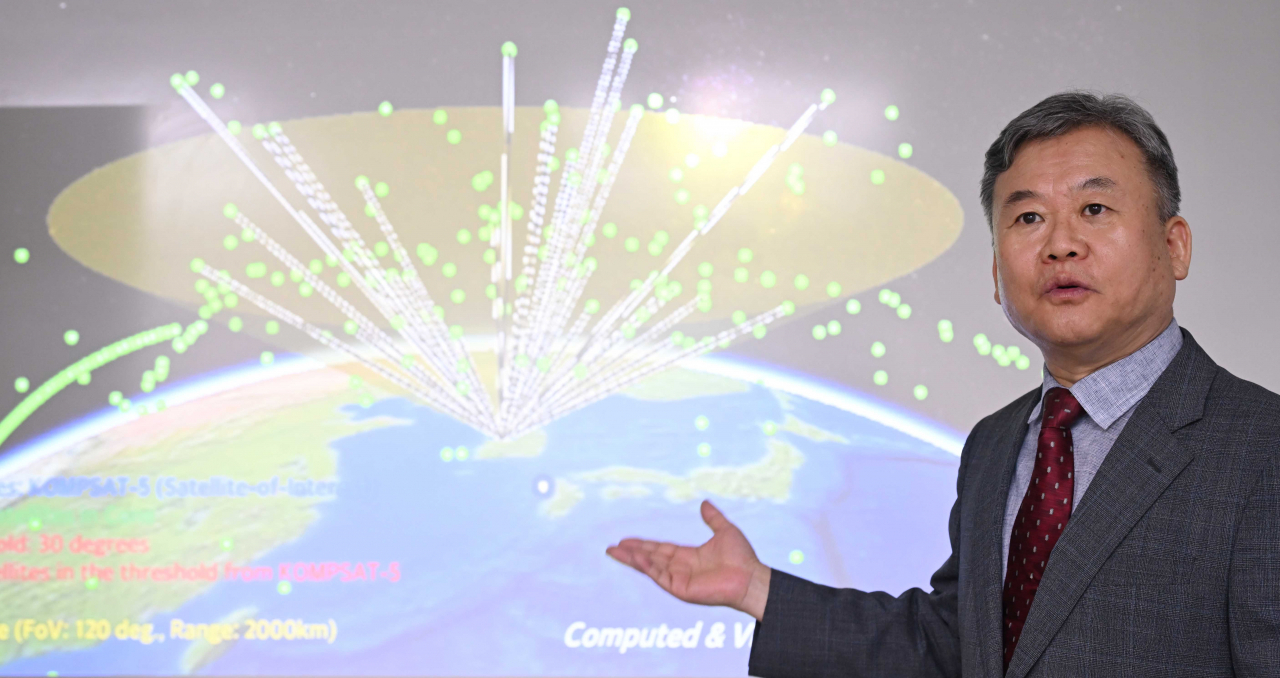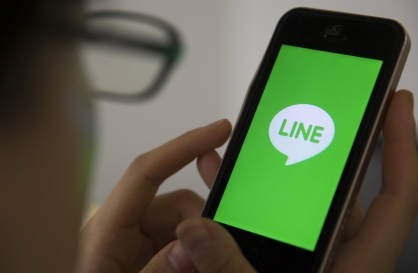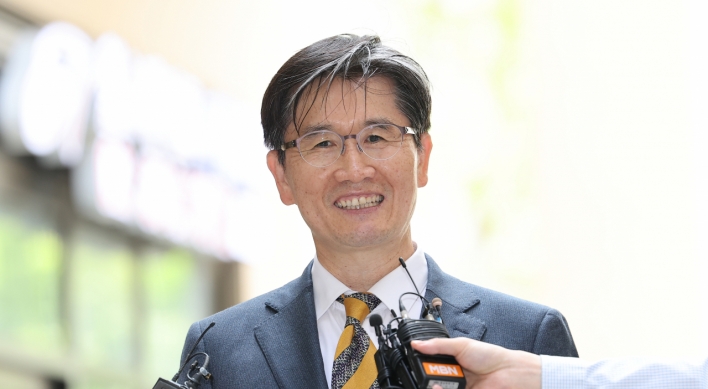[Beyond Earth] Spacemap looks to revolutionize satellite orbit prediction
Korean startup’s space platform technology based on Voronoi diagram receives nod from US Air Force
By Kan Hyeong-wooPublished : July 23, 2023 - 14:45

In February 2009, two communications satellites -- a commercial satellite owned by US-based global satellite company Iridium Communications and a Russian military satellite -- collided in space, marking the first-known collision between two satellites and resulting in over 10,000 pieces of space debris.
Spacemap, a South Korean startup, is looking to bring about an evolution that makes space missions safer with its platform technology that can predict the orbits of satellites and space debris to prevent collisions.
“What we are trying to do is to offer software that can solve all decision-making problems in terms of space safety and efficiency,” said Kim Deok-soo, CEO and founder of Spacemap, in an interview with The Korea Herald at the startup’s office in Seoul on July 13.
“Speaking of safety, it’s about predicting collisions with space debris and dodging them. Efficiency is about how to cut down the use of fuel in conducting different missions and accomplish the job as quickly as possible to minimize the cost.”
According to the European Space Agency, the number of space debris in orbit continues to increase. The ESA estimates that about 36,500 space debris objects greater than 10 centimeters in diameter and over 1 million objects sized between 1 cm to 10 cm are currently floating in orbit.
The CEO pointed out that as more satellites will be launched into low-Earth orbit at an altitude of approximately 550 kilometers, space will become more crowded and the probability of collisions will also rise as a result.
“SpaceX has about 4,500 satellites up in space. As of 2021, the number of (the satellites’) evasive maneuvers stood at 80 times on average. So that means the figure has probably gone up to 100 times or more now,” said Kim.
Spacemap’s orbit-predicting platform software is based on Voronoi diagrams. A Voronoi diagram is a tessellation pattern in which a number of points scattered on a plane subdivides in the number of cells enclosing a portion of the plane that is closest to each point. Using the Voronoi diagram, one can easily figure out how many points surround a point and the distances between them.
In 2015, when Kim was leading the Voronoi research team backed by the National Research Foundation of Korea, the United States Air Force reached out to him and offered him funding to support a project to apply the Voronoi diagrams to predict satellite orbits. After he presented his research at the US Air Force’s Space Vehicles Directorate, he eventually established Spacemap in 2021.
Using the US Air Force’s Space Catalogue, which offers a database of space objects, and applying Voronoi diagrams in 3D maps of the universe, Spacemap has developed software that can estimate how close satellites can approach one another in the future.
“It’s not just one and done process. We keep updating the data and carry out calculations repetitively,” he said.
“Even if a new space object entered orbit, we wouldn’t have to redo the whole process over. We would just need to update the information. So the calculation is nearly done in real-time. That’s the power of it.”
Kim was confident that Spacemap's method would be able to replace the existing method of predicting satellite orbits, which has been in wide use for the past 40 years. Unlike the traditional model that bases its predictions on one-to-one relations between each point, Spacemap’s Voronoi-applied model can calculate distances between a point and all of its adjacent points.
According to Kim, Spacemap is actively engaging in talks with a number of global space firms to discuss partnerships and is potentially on the verge of signing contracts.
“What we offer is a totally new technology. There is nothing like this. Once we can establish a few case examples, we expect the number of clients to grow exponentially,” he said.
Kim expressed gratitude for the National Research Foundation of Korea for its continuous and longtime support of his Voronoi research. He emphasized the need to stay patient for basic science studies.
“Because (the Voronoi study) was a long-term research project, I was able to lay down enough groundwork for (Spacemap’s) technology,” he said.
“So in regard to basic science studies, I hope an environment can be set up where researchers are allowed to steadily carry out their research with longer prospects because a successful technological discovery made in this field can bring about an enormous impact.”










![[Weekender] How DDP emerged as an icon of Seoul](http://res.heraldm.com/phpwas/restmb_idxmake.php?idx=644&simg=/content/image/2024/04/25/20240425050915_0.jpg&u=)

![[Today’s K-pop] NewJeans' single teasers release amid intrigue](http://res.heraldm.com/phpwas/restmb_idxmake.php?idx=644&simg=/content/image/2024/04/26/20240426050575_0.jpg&u=)






![[Herald Interview] Mistakes turn into blessings in street performance, director says](http://res.heraldm.com/phpwas/restmb_idxmake.php?idx=652&simg=/content/image/2024/04/28/20240428050150_0.jpg&u=)
